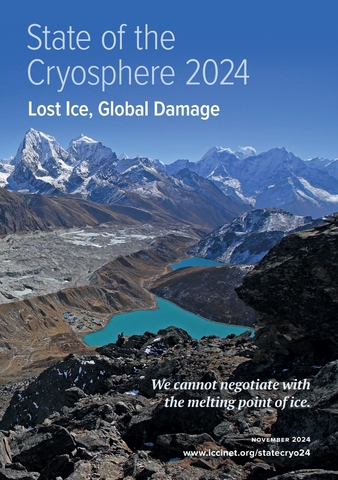Image
Julie Brigham-Grette and Robert DeConto, professors in the Department of Earth, Geographic, and Climate Sciences in the College of Natural Sciences, were among more than 50 leading cryosphere scientists who recently released their annual report on the status of the world’s ice stores, warning of vastly higher impacts and costs to the global economy given accelerating losses in the world’s cryosphere – its regions of snow and ice.
The State of the Cryosphere Report 2024, coordinated by the International Cryosphere Climate Initiative (ICCI), warns that current climate commitments, leading the world to well over 2°C of warming, would bring disastrous and irreversible consequences for billions of people from global ice loss. The report was published as global leaders gathered in Baku, Azerbaijan, for a Climate Leaders Action Summit in conjunction with the UNFCCC Conference of the Parties (COP29), and as the world’s governments prepare to update their climate pledges to the UN early in 2025.
Image

Based on the most recent cryosphere science updates from 2024, the authors of the report underscore that the costs of loss and damage will be even more extreme, with many regions experiencing sea-level rise or water resource loss well beyond adaptation limits in this century if our current level of emissions continues – leading towards a rise of 3°C or more. Mitigation will also become more costly due to feedback from thawing permafrost emissions and loss of sea ice.
For the first time, the report also notes a growing scientific consensus that melting Greenland and Antarctic ice sheets, among other factors, may be slowing important ocean currents at both poles, with potentially dire consequences for a much colder northern Europe and greater sea-level rise along the U.S. East Coast.
“The Greenland Ice Sheet is currently losing 30 million tons of ice per hour, something I never thought I would see in my lifetime,” says DeConto, who also serves as director of the School of Earth & Sustainability and spoke at COP29. “But Antarctica represents the real long-term threat, and if climate pledges are not taken seriously, global temperature rise may exceed 3°C, with Antarctic ice loss potentially causing sea levels to rise much faster than we think.”
The complete State of the Cryosphere Report 2024 can be found on the ICCI website at https://iccinet.org/statecryo24.
This post was originally published on here







